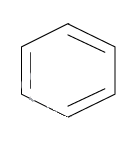
Explain the Huckel rule with example.
Answer
502.5k+ views
1 likes
Hint: Huckel rule is used to determine whether a molecule is aromatic or not based on the number of
Complete step by step solution:
Erick Huckel was a German chemist and physicist who in 1931 proposed an algorithm along with other conditions on the structure of planar ring organic compounds to determine whether the compound is organic or not. It is primarily based on the number of

There are three

Cyclobutadiene. Here we have 2
Note: Huckel rule is not only about the formula but also planar structure of the molecule. If the ring does not form a plane then also the molecule loses its aromaticity. Even ionic compounds can be aromatic if the electrons are conjugated.
Complete step by step solution:
Erick Huckel was a German chemist and physicist who in 1931 proposed an algorithm along with other conditions on the structure of planar ring organic compounds to determine whether the compound is organic or not. It is primarily based on the number of

There are three

Cyclobutadiene. Here we have 2
Note: Huckel rule is not only about the formula but also planar structure of the molecule. If the ring does not form a plane then also the molecule loses its aromaticity. Even ionic compounds can be aromatic if the electrons are conjugated.
Latest Vedantu courses for you
Grade 11 Science PCM | CBSE | SCHOOL | English
CBSE (2025-26)
School Full course for CBSE students
₹41,848 per year
Recently Updated Pages
Master Class 9 General Knowledge: Engaging Questions & Answers for Success

Master Class 9 English: Engaging Questions & Answers for Success

Master Class 9 Science: Engaging Questions & Answers for Success

Master Class 9 Social Science: Engaging Questions & Answers for Success

Master Class 9 Maths: Engaging Questions & Answers for Success

Class 9 Question and Answer - Your Ultimate Solutions Guide

Trending doubts
Give 10 examples of unisexual and bisexual flowers

Draw a labelled sketch of the human eye class 12 physics CBSE

Differentiate between homogeneous and heterogeneous class 12 chemistry CBSE

Differentiate between insitu conservation and exsitu class 12 biology CBSE

What are the major means of transport Explain each class 12 social science CBSE

Draw a diagram of a flower and name the parts class 12 biology ICSE




